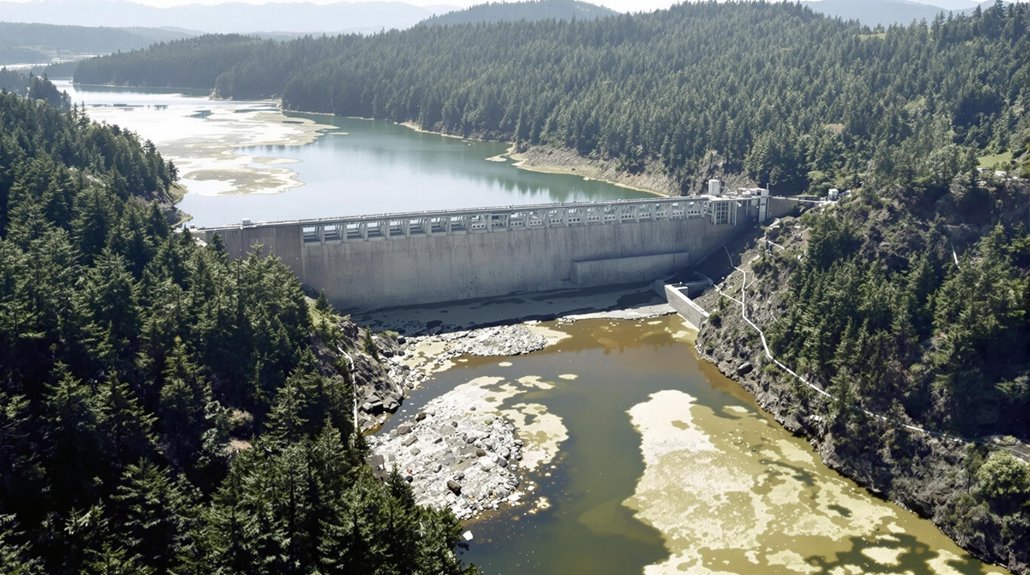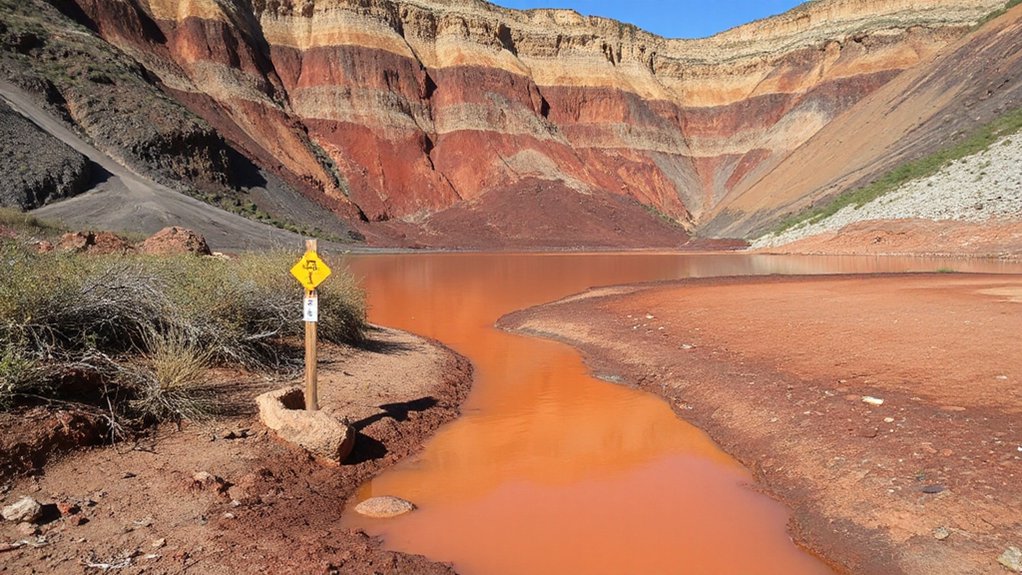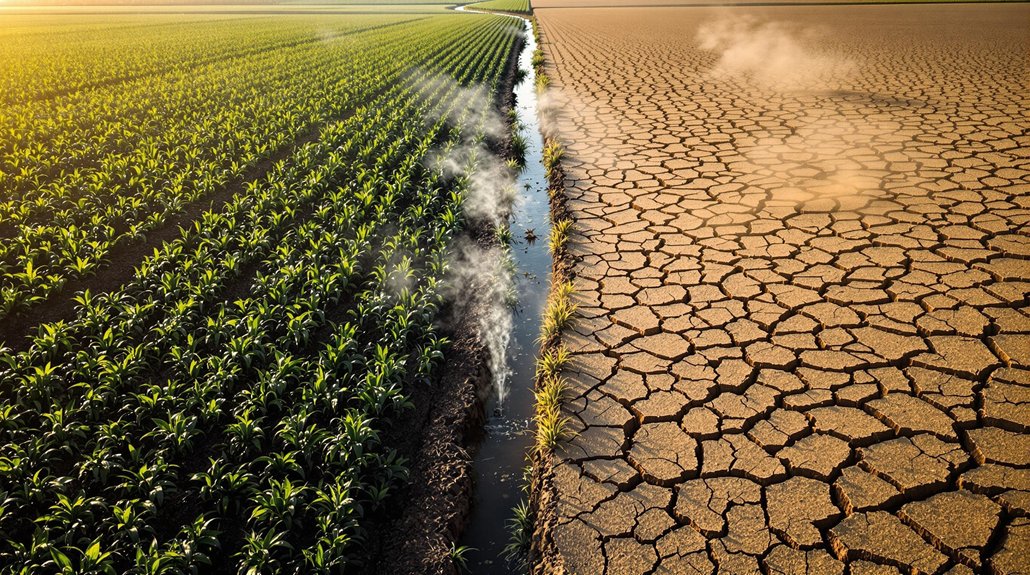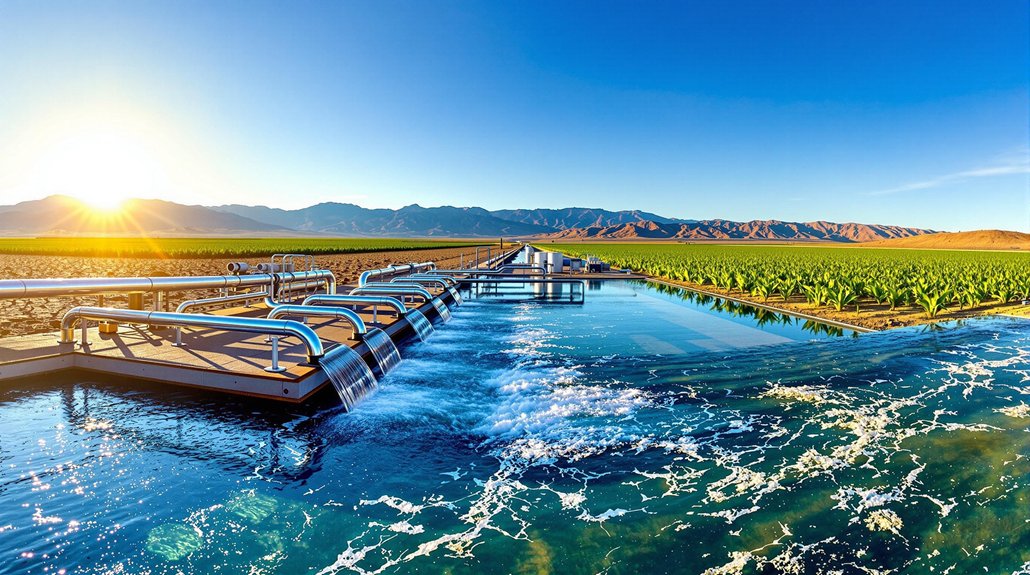After more than a century of blocking native salmon and steelhead, Scott Dam and Cape Horn Dams are finally coming down. PG&E’s $530 million demolition project on the Eel River is set to be one of the largest dam removals in U.S. history. Pretty big deal for fish who’ve been waiting around since your great-grandparents were kids.
The Potter Valley Hydroelectric Project stopped generating power in 2021. Turns out maintaining ancient dams for minimal energy wasn’t exactly a brilliant business model. PG&E will submit its license surrender application to federal regulators in July 2025, with actual demolition scheduled for 2028. Two years of dismantling concrete—thrilling stuff.
These dams haven’t just been inconvenient for fish. They’ve devastated salmon populations and screwed with the entire river ecosystem for generations. Once they’re gone, over 200 miles of upstream habitat will be accessible again. Nature gets a do-over.
Of course, it’s not all sunshine and rainbow trout. The demolition will release about 12 million cubic yards of sediment downstream. That’s a lot of mud. Water quality‘s going to take a hit initially, but officials are working on protective measures for native fish during this muddy shift. Scott Dam poses a significant risk due to its high earthquake failure risk, which has already resulted in reservoir usage restrictions.
The real drama is happening behind the scenes. Communities along both the Eel and Russian Rivers need water. A historic “two-basin solution” aims to balance ecological restoration with continued water supply. The plan includes a new diversion infrastructure (NERF) to replace the existing system.
Funding for the half-billion-dollar project will come from PG&E and possibly federal and state grants. The specific details? Still evolving. Typical. This transition aligns with the global shift toward renewable energy investments that are increasingly outpacing fossil fuel spending.
Agricultural stakeholders aren’t exactly throwing parties. They’re worried about water reliability and seeking assurances for both interim and future supplies. Meanwhile, Humboldt County Supervisors and various agencies have signed off on supportive deals. The Board of Supervisors recently approved the agreement unanimously, marking a significant milestone in negotiations between multiple stakeholders.
The feds, state agencies, tribal governments, conservation groups, farmers—everyone’s got a stake in this game. And for once, they’re mostly on the same page: these dams have got to go.
References
- https://www.americanwhitewater.org/content/Article/view/article_id/9nQQzoE7sQvTn1Qjmejaf/
- https://lostcoastoutpost.com/2025/jul/22/dam-removal-coming-soon/
- https://eelriver.org/2025/02/10/draft-dam-removal-plan-release/
- https://www.pge.com/en/newsroom/currents/hometowns/pg-e-submits-to-ferc-the-surrender-application-and-decommissioni.html
- https://caltrout.org/news/pge-makes-it-official-submits-plan-to-remove-potter-valley-project-dams-and-modernize-water-infrastructure









